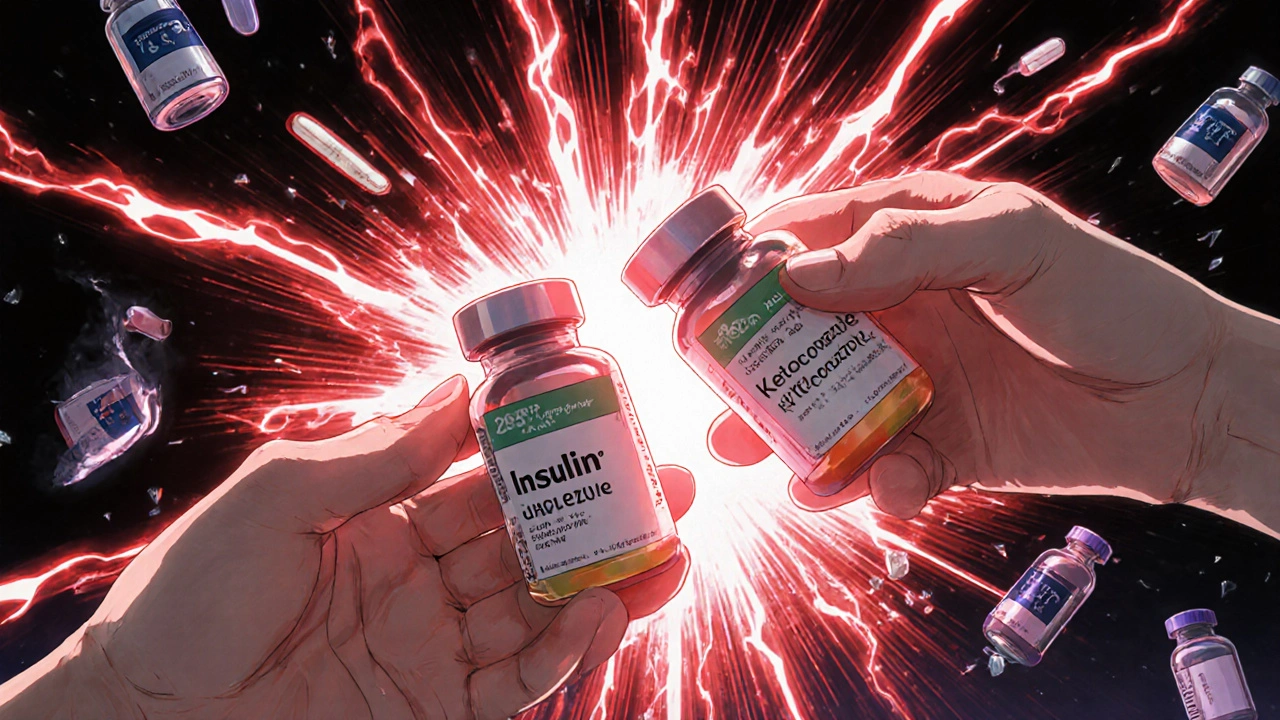Certain diabetes drug combinations can cause dangerous drops or spikes in blood sugar. Learn which interactions to avoid, from insulin and steroids to antifungals and kidney stressors, and what safer alternatives exist in 2025.
Diabetes Drug Interactions: What You Need to Know Before Taking Medications
When you have diabetes, a chronic condition where the body can’t properly regulate blood sugar. Also known as hyperglycemia, it requires careful management with medications like metformin, a first-line drug that reduces liver glucose production and improves insulin sensitivity, insulin, a hormone therapy that directly lowers blood sugar, or sulfonylureas, drugs that prompt the pancreas to release more insulin. But taking more than one medication—or mixing them with common OTC drugs, supplements, or even foods—can lead to dangerous diabetes drug interactions.
These interactions aren’t just theoretical. For example, taking metformin with certain antibiotics like ciprofloxacin can raise lactic acid levels, risking a rare but serious condition called lactic acidosis. Mixing insulin or sulfonylureas with nonsteroidal anti-inflammatories like ibuprofen can boost the risk of low blood sugar, sometimes without warning. Even something as simple as drinking grapefruit juice can interfere with how your body processes some diabetes meds, making them too strong or too weak. And it’s not just prescription drugs—supplements like chromium, alpha-lipoic acid, or bitter melon can also drop your blood sugar too far when combined with your regular meds. These aren’t edge cases. They happen often enough that doctors regularly see patients admitted for hypoglycemia after starting a new supplement or changing their pain reliever.
What makes this even trickier is that many people with diabetes take other meds for heart disease, high blood pressure, or cholesterol—conditions that often come with diabetes. Drugs like beta-blockers can hide the symptoms of low blood sugar, so you won’t feel your heart racing or sweating when your sugar drops. Diuretics might raise blood sugar, making your diabetes harder to control. And if you’re on statins like Lipitor, you might not realize they can slightly increase your glucose levels over time. It’s not about avoiding all these drugs—it’s about knowing how they play together. Your treatment isn’t just one pill. It’s a system. And every new addition changes the balance.
You don’t need to memorize every possible interaction. But you do need to know your own meds, ask your pharmacist about new prescriptions, and tell every doctor you see—dentists, specialists, ER staff—that you have diabetes and are on medication. Keep a simple list: drug name, dose, why you take it. Update it every time something changes. If you start feeling unusually tired, dizzy, or shaky after switching meds, don’t brush it off. That could be your body telling you something’s off. The posts below give you real, practical comparisons of common diabetes drugs and what happens when they mix with others. You’ll find clear breakdowns of how metformin behaves with diuretics, how insulin interacts with alcohol, and why some OTC painkillers are riskier than others. This isn’t guesswork. It’s what people with diabetes actually need to stay safe and in control.

